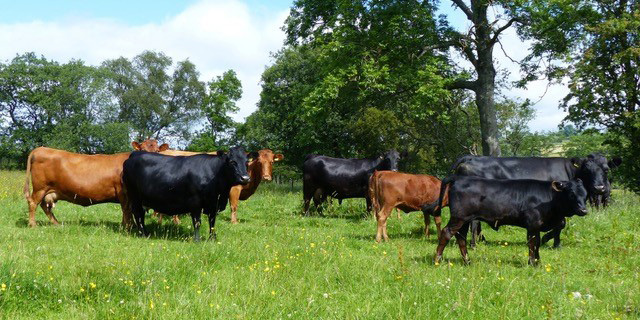
23 March 2023
Jane and Peter at Old Stoddah Farm were not always farmers. Both started their careers in forestry, and had a smallholding to experiment on. Back in the 1987, the inaugural sale at the then newly opened Penrith Auction Mart was of Red deer. Peter’s work in forestry often involved the management of deer too, and the sale sparked an interest in rearing deer and kickstarted their farming career with the purchase of 20 deer.

A couple of years later they bought a farm across the valley from their smallholding and began to expand their farming activities. With their landscape backgrounds, it was only natural for them to devote time and space to improving their new farm’s biodiversity too, adding ponds, woodland and hedgerows, as well as letting parts of the farm ‘go wild’, providing an undisturbed habitat for wildlife where native flora can flourish. This continues to be an essential part of their farming policy.

The turmoil of the 2001 Foot & Mouth epidemic provided the opportunity to make a few changes. Farming activities were diversified with the addition of a herd of Dexter cattle. The breed was initially selected for their small stature which was ideal for conservation grazing the farm’s wetter pastures in the Matterdale valley. But Jane and Peter soon realised the small carcase is also perfectly suited to direct sales and the quality of the beef produced by the Dexter perfectly complementing venison. It became apparent that the next logical step was to start selling their own meat.

A cutting plant was built on the farm, providing somewhere to butcher, package and label their own venison and beef ready to sell direct to the consumer. This service was and continues to be offered to local farmers too. Around 20 farms use the service, knowing that their meat is professionally and sustainably prepared with minimum food miles. Jane and Peter’s venison and beef is sold direct via their website (www.deer-n-dexter.co.uk), from the farm, and at several local farmers’ markets (Kendal, Orton, Brampton and Stainton).
At heart Jane and Peter are nature conservationists. Their work to encourage biodiversity has seen an increase in the wildlife. Notable sightings on the farm include otters, Red squirrels, woodcock, snipe, lapwing and many more birds of prey species than were apparent 30 years ago. They manage their livestock by rotational grazing during the summer and wintering inside. This allows their pastures to be rested and soils protected during the wet winter months, when otherwise the delicate soil structure and swards of their upland hill farm could easily be damaged.
Having decided to adopt a low input and ‘grass-fed’ approach to livestock rearing, protecting the pastures on which they depend, for both nutritious summer grazing and conserved forage for the winter, is critical to quality of the meat they produce and the success of the business.
Jane and Peter are innovators, always striving to sustainably manage both their land and animals. One part of the Lake District World Heritage Site’s story is that it is birthplace of landscape conservation. The ideas behind National Parks and the National Trust originated here. Jane and Peter continue that important legacy, making sustainable farming and nature conservation work together in harmony.